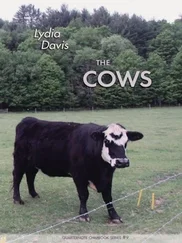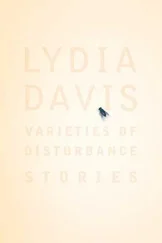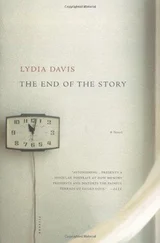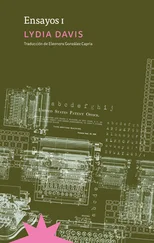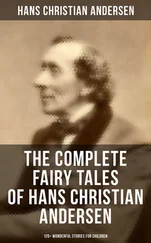Today, they are positioned exactly one behind the next in a line, head to tail, head to tail, as though coupled like the cars of a railway train, the first looking straight forward like the headlight of the locomotive.
The shape of a black cow, seen directly head-on: a smooth black oval, larger at the top and tapering at the bottom to a very narrow extension, like a teardrop.
Standing with their back ends close together now, they face three of the four cardinal points of the compass.
Sometimes one takes the position for defecating, her tail, raised at the base, in the curved shape of a pump handle.
They seem expectant this morning, but it is a combination of two things: the strange yellow light before a storm and their alert expressions as they listen to a loud woodpecker.
Spaced out evenly over the pale yellow-green grass of late November, one, two, and three, they are so still, and their legs so thin, in comparison to their bodies, that when they stand sideways to us, sometimes their legs seem like prongs, and they seem stuck to the earth.
How flexible, and how precise, she is: she can reach one of her back hooves all the way forward, to scratch a particular spot inside her ear.
It is the lowered head that makes her seem less noble than, say, a horse, or a deer surprised in the woods. More exactly, it is her lowered head and neck. As she stands still, the top of her head is level with her back, or even a little lower, and so she seems to be hanging her head in discouragement, embarrassment, or shame. There is at least a suggestion of humility and dullness about her. But all these suggestions are false.
He says to us: They don’t really do anything.
Then he adds: But of course there is not a lot for them to do.
Their grace: as they walk, they are more graceful when seen from the side than when seen from the front. Seen from the front, as they walk, they tip just a little from side to side.
When they are walking, their forelegs are more graceful than their back legs, which appear stiffer.
The forelegs are more graceful than the back legs because they lift in a curve, whereas the back legs lift in a jagged line like a bolt of lightning.
But perhaps the back legs, while less graceful than the forelegs, are more elegant.
It is because of the way the joints in the legs work: Whereas the two lower joints of the front leg bend the same way, so that the front leg as it is raised forms a curve, the two lower joints of the back leg bend in opposite directions, so that the leg, when raised, forms two opposite angles, the lower one gentle, pointing forward, the upper one sharp, pointing back.
Now, because it is winter, they are not grazing but only standing still and staring, or, now and then, walking here and there.
It is a very cold winter morning, just above zero degrees, but sunny. Two of them stand still, head to tail, for a very long time, oriented roughly east-west. They are probably presenting their broad sides to the sun, for warmth.
If they finally move, is it because they are warm enough, or is it that they are stiff, or bored?
They are sometimes a mass of black, a lumpy black clump, against the snow, with a head at either end and many legs below.
Or the three of them, seen from the side, when they are all facing the same way, three deep, make one thick cow with three heads, two up and one lowered.
Sometimes, what we see against the snow is their bumps — bumps of ears and nose, bumps of bony hips, or the sharp bone on the top of their heads, or their shoulders.
If it snows, it snows on them the same way it snows on the trees and the field. Sometimes they are just as still as the trees or the field. The snow piles up on their backs and heads.
It has been snowing heavily for some time, and it is still snowing. When we go up to them, where they stand by the fence, we see that there is a layer of snow on their backs. There is also a layer of snow on their faces, and even a thin line of snow on each of the whiskers around their mouths. The snow on their faces is so white that now the white patches on their faces, which once looked so white against their black, are a shade of yellow.
Against the snow, in the distance, coming head-on this way, separately, spaced far apart, they are like wide black strokes of a pen.
A winter’s day: First, a boy plays in the snow in the same field as the cows. Then, outside the field, three boys throw snowballs at a fourth boy who rides past them on a bike.
Meanwhile, the three cows are standing end to end, each touching the next, like paper cutouts.
Now the boys begin to throw snowballs at the cows. A neighbor watching says: “It was only a matter of time. They were bound to do it.”
But the cows merely walk away from the boys.
They are so black on the white snow and standing so close together that I don’t know if there are three there, together, or just two — but surely there are more than eight legs in that bunch?
At a distance, one bows down into the snow; the other two watch, then begin to trot towards her, then break into a canter.
At the far edge of the field, next to the woods, they are walking from right to left, and because of where they are, their dark bodies entirely disappear against the dark woods behind them, while their legs are still visible against the snow — black sticks twinkling against the white ground.
They are often like a math problem: 2 cows lying down in the snow, plus 1 cow standing up looking at the hill, equals 3 cows.
Or: 1 cow lying down in the snow, plus 2 cows on their feet looking this way across the road, equals 3 cows.
Today, they are all three lying down.
Now, in the heart of winter, they spend a lot of time lying around in the snow.
Does she lie down because the other two have lain down before her, or are they all three lying down because they all feel it is the right time to lie down? (It is just after noon, on a chilly, early spring day, with intermittent sun and no snow on the ground.)
Is the shape of her lying down, when seen from the side, most of all like a bootjack as seen from above?
It is hard to believe a life could be so simple, but it is just this simple. It is the life of a ruminant, a protected domestic ruminant. If she were to give birth to a calf, though, her life would be more complicated.
The cows in the past, the present, and the future: They were so black against the pale yellow-green grass of late November. Then they were so black against the white snow of winter. Now they are so black against the tawny grass of early spring. Soon, they will be so black against the dark green grass of summer.
Two of them are probably pregnant, and have probably been pregnant for many months. But it is hard to be sure, because they are so massive. We won’t know until the calf is born. And after the calf is born, even though it will be quite large, the cow will seem to be just as massive as she was before.
The angles of a cow as she grazes, seen from the side: from her bony hips to her shoulders, there is a very gradual, barely perceptible slope down; then, from her shoulders to the tip of her nose, down in the grass, a very steep slope.
The position, or form, itself, of the grazing cow, when seen from the side, is graceful.
Why do they so often graze side-view on to me, rather than front- or rear-view on? Is it so that they can keep an eye on both the woods, on one side, and the road, on the other? Or does the traffic on the road, sparse though it is, right to left and left to right, influence them so that they graze parallel to it?
Or perhaps it isn’t true that they graze more often sideways on to me. Maybe I simply pay more attention to them when they are sideways on. After all, when they are perfectly sideways on, to me, the greatest surface area of their bodies is visible to me; as soon as the angle changes, I see less of them, until, when they are perfectly end-on or front-on to me, the least of them is visible.
Читать дальше

